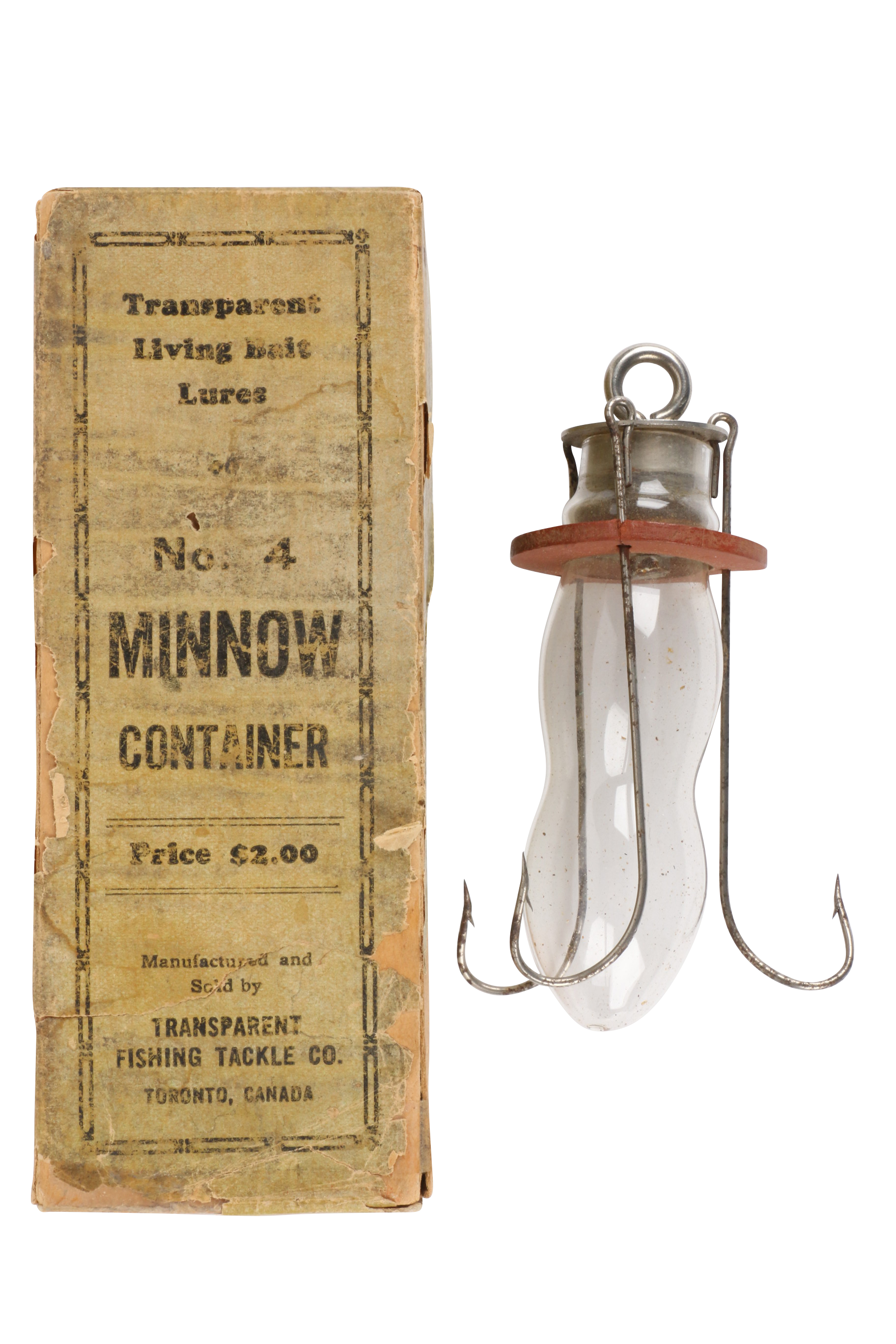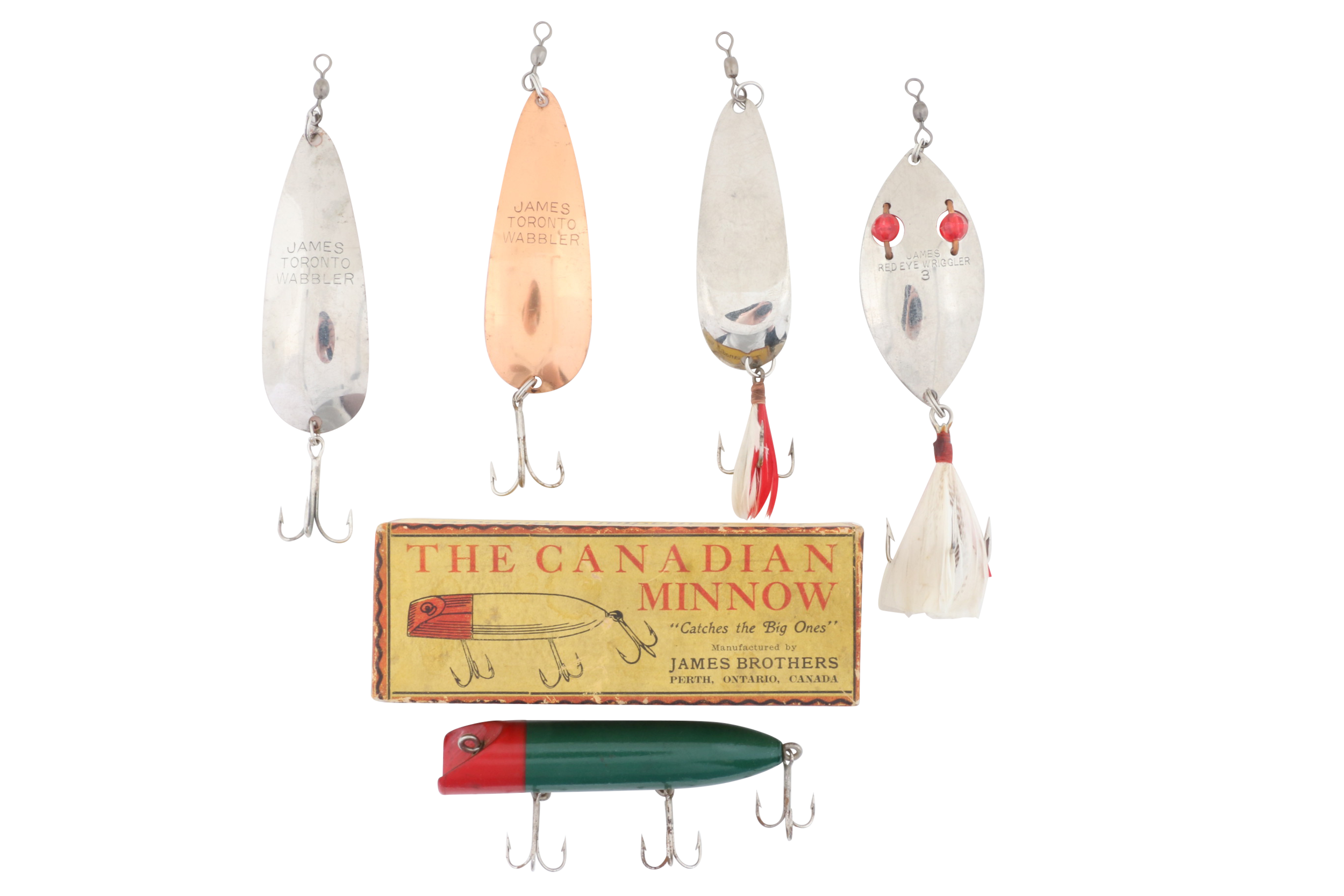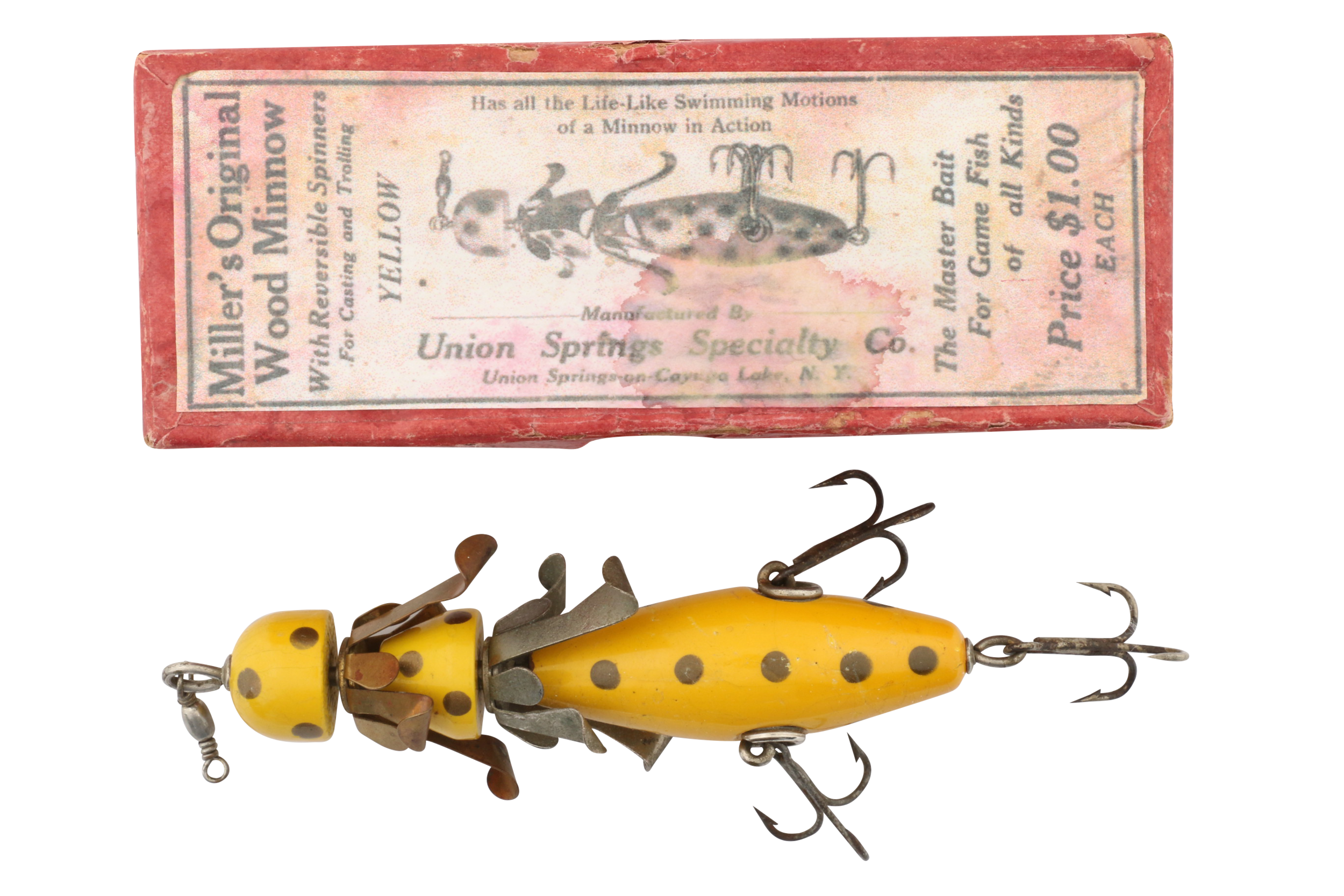One man’s alluring 40-year passion comes to market
Rick Seymour, left, at a Canadian Antique Fishing Tackle Association show.
It’s sometimes said that fishing lures are designed as much to entice the fisherman as they are to attract the fish.
Well, they certainly reeled in Rick Seymour, the Canadian lure enthusiast who spent 40 years compiling an outstanding collection of antique lures, slated to be sold Oct. 19, 2019 through Miller & Miller Auctions Ltd.
Seymour’s collection “is worthy of international attention,” according to Jason Halliday, a 30-year collector himself and a consultant to the auction house. “Rick was all about condition. It had to be as close to perfect as possible. He’s well-known in both Canada and the U.S. and it’s safe to say there is something here to interest everyone. The quality and content is vast.”
Seymour’s collection includes a complete set of all four ‘living bait’ lures made by Canada Needle & Fishing Tackle. Celebrated as ‘bait-savers’, these inventive lures hold the worm (or other temptation) within a small glass bulb surrounded by hooks. They come in four sizes with each bulb designed to hold a different live bait. No. 1 is for a small garden worm, No. 2 is for a big dew worm, No. 3 is for a crawfish or frog, and No. 4 is devised for a minnow.
The ‘living bait’ lures come in four sizes with each bulb designed to hold a different live bait.
Other highlights include Miller’s Original Minnows, and a Canadian Minnow in its original box, which came out of an old hardware store in Perth, Ontario. There’s also the hard to find Edgar’s Minnow (R90) made by Lucky Strike, of Peterborough, Ontario, a family-run company that’s still in business after 90 years.
Overall, there are more than 1,000 pieces in Seymour’s collection, dating from the early 1900s to the 1960s. There are Canadian rarities, some German gems and a number of lures that have the original boxes – something that can double their value.
“It’s hard to find a good, original box,” says Halliday. “Most guys would just throw the box away or pitch it into the fire at lunch. If it was left in the tackle box, chances are it would get pretty dirty or oily and eventually get tossed.”
Seymour’s prizes include Miller’s Original Minnows, a Perth Canadian Minnow and an Edgar’s Minnow (R90) made by Lucky Strike.
Knowledgeable collectors are familiar with the value of lures, but the average person might be stunned to learn that a single fishing lure can be worth as much as $10,000, or more.
Miller & Miller’s two-day auction of fishing lures in October 2018, featured the single-owner lifetime collection of the late Bob Ronson, another well-known Canadian collector and a friend of Seymour’s. The much talked about sale included more than 700 lots and grossed over $175,000 (CAD).
During that auction, a circa 1910 green wooden Chippewa spinner with black spotted sides, in its original box, made by the U.S.-based Immell Bait & Tackle Company, brought $10,030. The middle section of the lure rotates like a propeller, causing a vibration in the water designed to attract a fish. The Chippewas are rare since most didn’t survive active use intact. The large Chippewas made to catch muskie (sometimes called the fish of 10,000 casts due to their evasiveness) rarely survived. If it did manage to entice a muskie, its large, razor sharp teeth often destroyed the lure.
During the same 2018 sale, a Lurette No. 2 lure with its original box and both sets of paper instructions, brought over $4,000. A Vaughn’s lure box with paperwork but no lure, commanded over $2,000.
This circa 1910 ‘Chippewa Spinner’ made by the U.S.-based Immell Bait & Tackle Company, brought $10,030 at Miller & Miller’s 2018 Sale.
A ‘living bait’ Lurette No. 2 lure with its original box and both sets of paper instructions, brought over $4,000 at Miller & Miller’s 2018 Sale.
The evolution of fishing lures is all about adding features designed to attract a fish – or fascinate a fisherman, according to Halliday. The early lures were often just hand-whittled pieces of wood with a hook attached. Later, spinners were added to reflect light and create a vibration in the water, both intended to attract fish. From glass bulbs containing live bait, to colourful, hand-painted prey with hand-blown glass eyes, each new lure was supposed to be better than the last. “Every year new features were added, yet the fish have never changed,” laughs Halliday.
Like most other antiques, value is determined by rarity, condition, beauty and craftsmanship.
The most famous fishing lure in the world is probably the Giant Haskell Minnow, which was patented in 1859, is 10 inches long (25 cm) and made of hollow copper. It sold in the U.S. in 2003 for more than $100,000 (US).
The most famous fishing lure in the world, this Giant Haskell Minnow, sold in the U.S. in 2003 for more than $100,000 (US).
And while collectible lures can be worth big money in today’s market, the early hand-made, hand-painted lures were even costly back in the day. “Lures were originally for the wealthy – doctors and other professionals. They were never mass-produced since most people couldn’t afford them,” explains Halliday. “The average fisherman could only afford live bait.”
As for Seymour, he says he found it easy to get hooked on collecting lures. The fact that he was an avid fisherman with antique dealer parents naturally spawned his interest, which only intensified over time. He recalls his first big purchase, which came his way about 20 years ago. Another collector offered him 740 lures for $8,500 and he took it. Seymour then sold the duplicates one by one until he got his original investment back. After that he decided to focus on the rarest pieces and top Canadian lures.
“A quality piece never loses interest for collectors,” he says. “And you’ll love looking at them yourself. Hang them up like a piece of art, because that’s what they are.”
Story By Diane Sewell
Did you enjoy this article? Feel free to share it using the buttons below:














